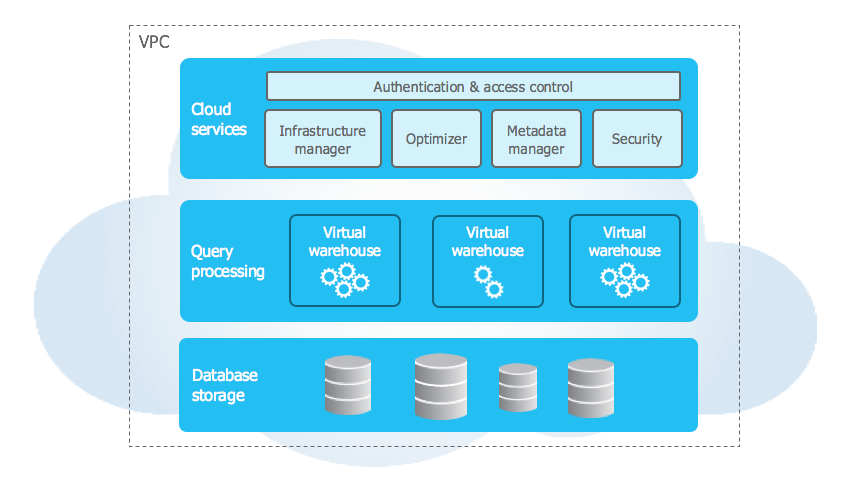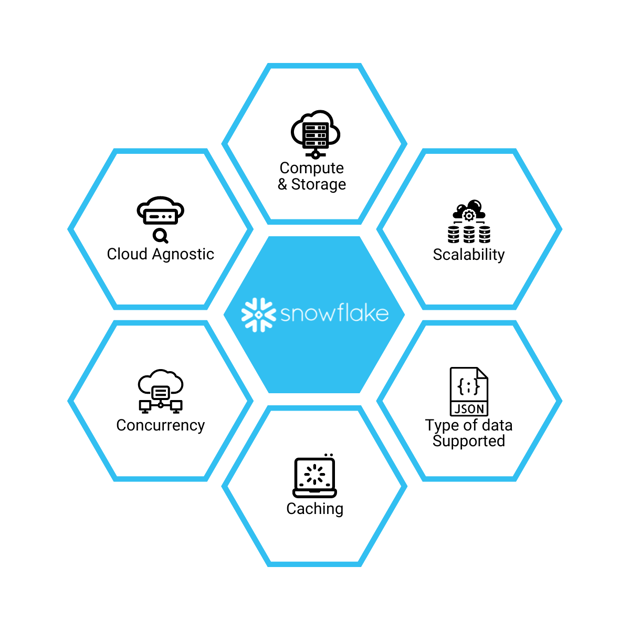Migrating to Snowflake

The Benefits of Snowflake
Almost every company is undertaking Cloud migration journey, according to a survey conducted by Next Pathway of over 1000+ IT leaders across North American in February 2022. The research reenforces that the consistent rise, veracity, and volume of data has compelled organizations to look at adopting a cloud-based model that offers scalability, and performance. The Cloud is seen as a strategic imperative to remain competitive and an enabler for persona-based digital experiences. Snowflake is currently one of the most popular cloud data platforms.
Snowflake is a fully managed, integrated system for managing data. It combines serverless compute, performance, flexibility, and scalability to manage enterprise data for analytics and reporting. Further, Snowflake’s multi-cloud architecture allows customers to use multiple cloud service providers for data storage, be it AWS, Microsoft Azure, or Google Cloud Platform, and have the data all centralized and consumable via Snowflake. In a highly competitive and ever-changing business environment, this type of agility is a game-changer for enterprise data management.
The Key Features of Migrating to Snowflake
Snowflake’s Data Warehouse as a service is where ongoing maintenance, management, upgrades, and tuning are handled by Snowflake.
 Image Source: Snowflake Architecture – By Snowflake
Image Source: Snowflake Architecture – By Snowflake
Some of the key features of Snowflake are:

Let us look at each of these key features
- Storage and Compute Layer: Storage Layer is the layer at which the central repository lies. Any data loaded into the system undergoes partitioning and reorganization into Snowflake’s compressed, internally optimized columnar format. Data stored in this layer is central, and all nodes in the cluster can access it. Snowflake manages all aspects of data storage, thereby allowing users to only interact with the underlying data through SQL queries. Compute layer handles the execution of queries. It does this using virtual warehouses—that are independent MPP compute clusters with multiple compute nodes.
- Scalability: Snowflake offers horizontal scalability with no manual intervention. Horizontal scalability also known as ‘scaling out’, improves the cloud throughput by adding new computing infrastructure. Snowflake can add new computing nodes or machines to enhance the data processing and storage capabilities.
- Type of Data supported: Typically to parse JSON data pipelines are needed to be developed. Snowflake has built in native support for JSON data using the VARIANT data type. It can store both structured and semi structured data. As data gets loaded, Snowflake automatically parses the data and extracts the attributes and stores it in a columnar format. Hence eliminating the need for data extraction pipelines.
- Caching: Snowflake supports multiple levels of caching. This helps in speeding up user queries and reduce costs. When a query is run, for example, Snowflake keeps the results of the query for 24 hours. So, if the same query is run again by the same user or another account user, the results are already available to be returned, assuming the underlying data hasn’t changed. This is especially useful for analysis work, as it eliminates the need to rerun complex queries to access previous data or compare the results of complex queries before and after a change
- Concurrency: Snowflake's unique cloud data warehouse architecture allows you to run diverse workloads in parallel, without contention or performance impact.
- Cloud Agnostic: Customers can implement Snowflake into their current cloud architecture and is available on all AWS, Azure and GCP.
How Next Pathway can help migrate your organization to Snowflake faster
Next Pathway’s cloud migration platform empowers companies to automate their end-to-end migrations to Snowflake from migration planning, migration execution, to cut-over.
We typically follow 2 steps as listed below:
Step 1: Our Crawler360™ product is an automated migration planning tool. This insight-led technology automates the entire discovery of legacy workloads and applications, making it easy to to plan an end-to-end migration to Snowflake. Crawler360 can scan legacy systems like Teradata, Netezza, Hadoop, and legacy ETL pipelines such as Informatica Power Center, IBM DataStage, Microsoft SSIS and Talend Data Fabric. The latest version of Crawler360 includes the ability to create a Migration Wave Plan and automatically trigger code translation.
Step 2: Our SHIFT™ migration suite will help you migrate to Snowflake in automated way. SHIFT can translate all legacy code (including SQL, Stored Procedures, ETL and other objects) to SnowSQL.. Moreover, SHIFT can migrate legacy ETL’s into Snowflake’s Snowpark library to provide for querying and processing data in a data pipeline.
Migrating to the cloud offers incredible savings to your organization and the ability to enable digital transformation. Choosing your cloud data warehouse is an important decision. Snowflake is an ideal choice for data warehousing, data lakes, data engineering, data science, data application development, and securely sharing and consuming shared data.
Checkout Guide: How to Migrate to Snowflake 95% Faster?
About Next Pathway
Next Pathway is the Automated Cloud Migration company. Powered by Crawler360™ and SHIFT Cloud, Next Pathway automates the end-to-end challenges companies experience when migrating applications to the cloud. For more information, please visit nextpathway.com.
